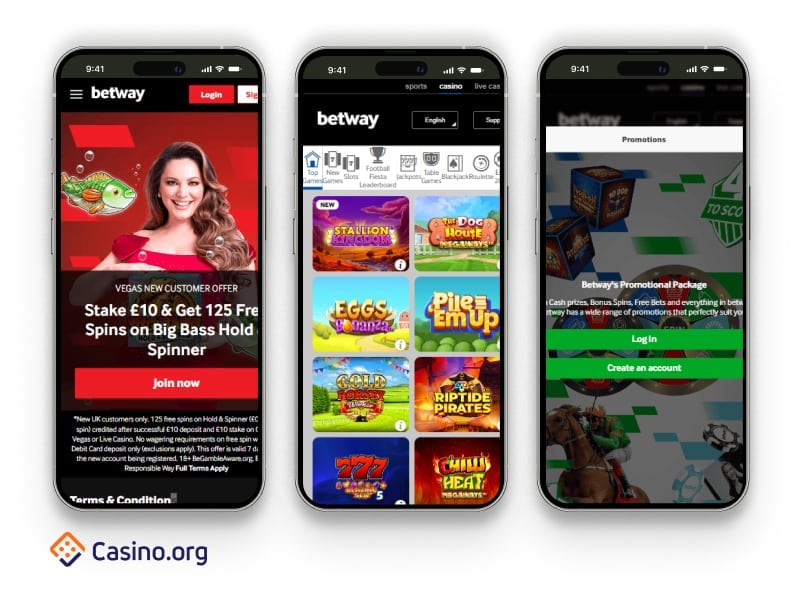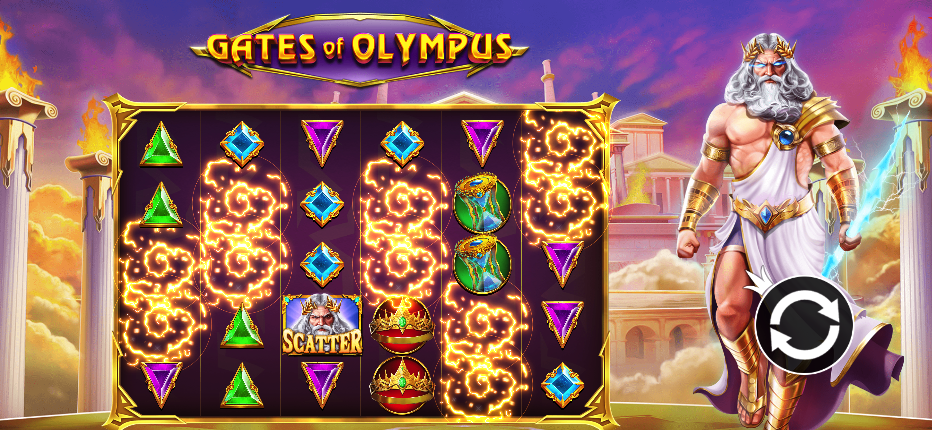
Biorąc pod uwagę platformę do gier online, wiarygodność i nagrody są kluczowymi czynnikami dla graczy takich jak Ty. Kasyno Godzino oferuje wyjątkowe połączenie bogactwa gier i mocnych protokołów bezpieczeństwa, zaprojektowanych z myślą o maksymalizacji wrażeń. Jego program szybkich nagród dodaje kolejny poziom atrakcyjności. Kluczowe jest jednak przeanalizowanie, jak te elementy integrują, kształtując całościowe środowisko dla graczy. Co odróżnia Godzino na tle przeciwników na nasyconej scenie kasyn online? https://godzino.pl/
Analiza kasyna Godzino
Analizując opcje gier online, kasyno Godzino wyróżnia się jako pewna platforma dla graczy pragnących wielości i bezpieczeństwa. Operując w ramach nadzorowanej struktury, zapewnia zabezpieczenie danych osobowych i finansowych dzięki wysokiej klasy metodom szyfrowania.
Zobaczysz tu intuicyjny interfejs, który poprawia nawigację i ułatwia dostęp do licznych funkcji. Kasyno angażuje się również w rozważną grę, udostępniając narzędzia, które umożliwią Ci utrzymać kontrolę nad grą.
Wsparcie klienta funkcjonuje 24/7, zapewniając pomoc w razie potrzeby, co zwiększa atrakcyjność tego miejsca jako godnego zaufania. Co więcej, licencje kasyna od szanowanych instytucji poświadczają jego przestrzeganie ze normami branżowymi, co zwiększa Twoje wiarę do postawienia na Godzino jako lokalizacji do gry.
Różnorodność i standard gier
Biorąc pod uwagę grę w Godzino Casino, dostrzeżesz, że oferta gier jest bogaty i odpowiada upodobaniom różnych graczy.
Doskonała grafika wzbogaca poziom wrażeń wizualnych, czyniąc, że zabawa jest nie tylko przyjemna, ale i angażująca.
Ostatecznie to połączenie tych czynników sprawia, że rozgrywka jest fascynująca i warta uwagi.
Szeroki zakres gier
Kasyno Godzino oferuje wyjątkowy wachlarz opcji gier, dzięki czemu gracze nigdy nie będą mieli kłopotu z wyborem. Ta różnorodna oferta obejmuje tradycyjne gry stołowe, pełne akcji wideosloty i przełomowe gry z krupierem na żywo.
Każda kategoria oferuje wiele tytuły, dostosowane do zróżnicowanych poziomów umiejętności i preferencji, co wzbogaca zaangażowanie użytkownika. Ponadto gładka integracja odmiennych typów gier pozwala na łatwe przełączanie się między stylami, zapewniając kompleksowe wrażenia z gry.
Rozległy wybór opcji sprawia, że nawet doświadczeni gracze mogą poznawać nowe strategie i ruchy w rozgrywce, nie popadając w stagnację. W związku z tym, starannie dobrana selekcja tytułów w kasynie Godzino nie tylko koncentruje się na ilość, ale także podkreśla znaczenie zróżnicowania dla zachowania zainteresowania i satysfakcji graczy przez znaczny czas.
Wysokiej jakości grafika
Wysokiej jakości grafika ma w sobie określony urok, który potrafi przekształcić wrażenia z gry, urzekając graczy od momentu, gdy tylko rozpoczną grę. Te efekty wizualne nie są jedynie artystyczne; tworzą hipnotyzującą atmosferę, która mocno wciąga gracza w rozgrywkę.
Skrupulatne detale – od realistycznych modeli postaci po gładkie animacje – pogłębiają zrozumienie mechaniki i fabuły gry. Wysokiej jakości grafika ponadto podnosi poczucie realizmu i emocjonalnej więzi, wzmacniając zaangażowanie w wyniki.
Ponadto mogą one sugerować na zaangażowanie dewelopera w jakość, co może mieć oddziaływanie na ogólne wrażenia z gry. Stawiając na pierwszym miejscu gry z zachwycającą grafiką, nie tylko wzmacniasz przyjemność z gry, ale także zdobywasz wiedzę na temat najnowszych trendów i technologii tworzących branżę gier.
Ekscytujące wrażenia z rozgrywki
Podczas odkrywania kasyna, szeroki wybór dostępnych gier może istotnie poprawić ogólne wrażenia. W szczególności kasyno Godzino oferuje imponujący wachlarz opcji, od klasycznych gier stołowych po nowoczesne automaty.
Ta różnorodność nie tylko zaspokaja różne preferencje, ale także daje szansę testować z wieloma strategiami i stylami rozgrywki. Najwyższej klasy mechanika gry gwarantuje, że każda interakcja będzie wciągająca, a innowacyjne funkcje, takie jak dodatkowe rundy i darmowe spiny, potęgują emocje.
Co więcej, dobrze przemyślane projekty gier koncentrują się na doświadczenie gracza, regularnie implementując progresywne jackpoty, https://www.marketindex.com.au/asx/rth/announcements/stakecom-partners-with-rth-to-launch-horse-racing-globally-3A634971 które podnoszą atrakcyjność gier.
Promocje i bonusy
W kasynie Godzino urok promocji i bonusów jest kluczowa w przywabianiu graczy i poprawianiu ich wrażeń z gry.
Te nagrody nie tylko oferują natychmiastowe korzyści, ale także znacząco zwiększają możliwe zyski.
Zastanów się nad bogactwo dostępnych bonusów, takich jak oferty powitalne, bonusy za doładowanie i bezpłatne obroty.
Każda promocja ma cel strategiczny, regularnie stworzony tak, aby zachęcić do specyficznej gry lub przytrzymania gracza.
Program nagród natychmiastowych
Program Nagród Natychmiastowych w kasynie Godzino to ilustracja strategicznej inicjatywy mającej na celu wzmocnienie uczestnictwa i zadowolenia graczy. Program ten określa Twoje upodobania dotyczące gier i wynagradza Cię szybkimi bonusami i korzyściami dostosowanymi do Twoich zwyczajów.
Oferując bezpośrednią gratyfikację, efektywnie wydłuża czas gry i wzmacnia lojalność. Program funkcjonuje w oparciu o punktowy system, dając możliwość zbieranie nagród w miarę stawiania zakładów, co zachęca do długotrwałej współpracy z kasynem.
Co dodatkowo, regularna wymiana informacji dotycząca Twojego poziomu nagród zapewnia Ci dostęp do bieżących informacji i bodziec. Ta strategia nie tylko wzmacnia retencję graczy, ale także kształtuje grupę, co finalnie korzystnie wpływa tak samo użytkownikowi, jak i kasynu.
Podsumowując, opanowanie programu Instant Rewards może znacząco zwiększyć Twoje przeżycia z zabawy w platformie Godzino.
Zabezpieczenie i rzetelność
Zabezpieczenie jest priorytetowe w świecie rozgrywek online, a serwis Godzino stawia wiarygodność graczy na pierwszym miejscu. Aby zagwarantować bezpieczne środowisko zabawy, wprowadziło silne zabezpieczenia bezpieczeństwa, zapewniając ochronę podczas zabawy.
Weź pod uwagę następujące czynniki ich poświęcenia w ochronę:
- Nowoczesna technika szyfrowania zabezpiecza Twoje informacje osobiste.
- Systematyczne przeglądy wykonywane przez autonomiczne organizacje weryfikują ich procedury.
- Regulacje odpowiedzialnej zabawy wspiera pozytywne nawyki odnośnie rozgrywką.
- Rygorystyczne regulacje sprawdzania wieku uniemożliwiają rozgrywkę nieletnim.
- Transparentne warunki handlowe zapewniają transparentność wszelkich operacji.
Serwis klienta i zaangażowanie wspólnoty
Rozważając obsługę klienta w serwisie Godzino, dostrzeżesz na takie istotne cechy, jak reaktywne kanały wsparcia i obecność czatu na żywo, które poprawiają wygodę zabawy.
Dodatkowo grupy wspólnotowe odgrywają kluczową rolę w wspieraniu udziału i zapewnianiu osobom grającym poczucia związku.
Wszystkie te elementy łącznie tworzą mocny system pomocy, który jest w stanie pomóc w efektywnym rozstrzygnięciu Twoich problemów.
Systemy pomocy dostosowujące się na wymagania użytkownika
Na ile skutecznie platforma gier reaguje na wymagania swoich graczy? W platformie Godzino zaangażowanie w reaktywne kanały wsparcia jest dowodem ich oddania w spełnienie graczy.
Oto ważne elementy obsługi klienta, które ulepszają jakość Twoich przeżyć:
- Całodobowa dostępność 24/7 w celu natychmiastowej pomocy
- Wielojęzykowe wsparcie dostosowane do potrzeb różnych graczy
- Wiele opcji kontaktu, w tym czat na żywo i e-mail
- Dokładne odpowiedzi na najczęstsze pytania, które ułatwią rozwiązanie typowe pytania
- Szybkie rozwiązywanie problemów, podnoszące zaufanie graczy
Elementy te stanowią mocną konstrukcję wsparcia, która nie tylko eliminują problemy, ale także wzmacnia zaufanie.
Dzięki takim środkom na wyciągnięcie ręki możesz koncentrować się na radości płynącej z gry, będąc pewnym, że pomoc jest na wyciągnięcie ręki. Natychmiastowo reagujący system wsparcia jest istotny dla rozwijania stałej społeczności graczy.
Zaangażowanie na społecznościowych forach
Dlaczego społecznościowe fora są kluczowe w świecie gier online? Te platformy oferują graczom takim jak Ty przestrzeń do budowania relacji, wymiany doświadczeniami i zdobywania odpowiedzi na pytania poza standardową obsługę klienta.
Zaangażowanie w forach pogłębia twoje pojęcie mechaniki gry, strategii i promocji, zwiększając poczucie wspólnoty.
Współpraca na forach wspiera kolektywnemu rozwiązywaniu problemów, dając możliwość korzystania z mądrości wytrawnych graczy. Ponadto, bezpośrednia informacja zwrotna do operatorów może przyczynić się do rozwoju gry i polepszyć globalne odczucia.
Dzięki aktywne uczestnictwo nie tylko poszerzasz wiedzę, ale także przyczyniasz się do tworzenia kultury otwartej, w której ważne są wspólne perspektywy.
W istocie fora społecznościowe funkcjonują jako kluczowe ekosystemy, które poszerzają Twoją podróż z grami i zwiększają zadowolenie graczy.
Dostępność czatu na żywo
Wielu graczy docenia wygodę czatu na żywo w internetowych kasynach, takich jak Godzino. Ta funkcja jest istotny składnik w rozwiązywaniu problemów i ulepszaniu odczuć użytkownika.
Dostarcza liczne zalety:
- Błyskawiczna pomoc w przypadku niezwłocznych zapytań
- Bezpośredni sposób na objaśnienie zasad i polityk gry
- Natychmiastowa interakcja, skracająca czas oczekiwania w porównaniu z e-mailem
- Platforma do interakcji i przekazywania opinii użytkowników
- 24/7 dostęp do serwisu technicznego, dający nieprzerwaną dostępność wsparcia
Wykorzystanie czatu na żywo może wyraźnie poprawić przeżycia z gry, dając możliwość błyskawiczne rozwiązywanie problemów i zachęcając do poczucie przynależności.
Kierunek rozwoju kasyna Godzino
W miarę jak sektor gier stale się rozwija, kasyno Godzino znajduje się w ważnym momencie kształtowania swojej drogi.
Prawdopodobnie zobaczysz rosnący uwagę na integrację technologii, w tym AI-driven analytics, aby dostosowywać wrażenia użytkowników. Ta innowacja jest istotna, ponieważ użytkownicy z coraz większą częstotliwością poszukują spersonalizowanych ofert, które wzmacniają ich zaangażowanie.
Co więcej, w obliczu światowych zmian przepisów, firma Godzino powinna utrzymywać zgodność z przepisami, zachowując jednocześnie o swoją renomę wiarygodnego.
W kolejnych okresach mogą zostać zaprezentowane także rozszerzone opcje płatności i cyfrowe środki płatnicze, które zainteresują rozleglejszą grupę odbiorców.
Co więcej, ich oddanie w odpowiedzialne granie będzie miało podstawowe znaczenie w budowaniu solidnej wizerunku.
FAQ
Jakie opcje płatności są dostępne w kasynie Godzino?
Sprawdzając formy płatności, zauważysz wiele propozycji. Zazwyczaj obejmują one karty debetowe, portfele elektroniczne i przelewy bankowe. Przegląd czasu przetwarzania i kosztów istotnie poprawia ogólne wrażenia z gry.
Czy można korzystać z kasyna Godzino na urządzeniach mobilnych?
Obecnie brakuje oficjalnej aplikacji mobilnej na tę platformę. Można jednak uzyskać dostęp do strony za pomocą przeglądarki mobilnej, która oferuje łatwą w obsłudze nawigację dostosowaną do rozgrywki i funkcjonalności na urządzeniach mobilnych.
Czy istnieją jakieś ograniczenia dotyczące wypłat?
Przy rozważaniu wypłaty, ważne jest, aby zapoznać się z regulaminem kasyna, ponieważ ograniczenia zwykle dotyczą minimalne kwoty, czas przetwarzania i weryfikację tożsamości. Zrozumienie tych szczegółów może zwiększyć komfort korzystania z kasyna i zapewnić sprawniejsze transakcje.
Jak mogę zamknąć swoje konto w kasynie Godzino?
Aby zamknąć konto, przejdź do ustawień konta lub zwróć się do obsługą klienta. Sprawdź, czy dokonałeś/aś wszystkich niezbędnych wypłat lub oczekujących transakcji. Ważne jest, aby w pełni zrozumieć konsekwencje przed podjęciem ostatecznej decyzji.
Czy kasyno Godzino zapewnia gry z krupierem na żywo?
Tak, wygląda na to, że oferują gry z krupierem na żywo. Gry te mogą poprawić Twoje wrażenia z gry, zapewniając wciągające środowisko, w którym możesz wchodzić w interakcje z prawdziwymi krupierami i innymi graczami, wypełniając lukę między kasynami online a kasynami stacjonarnymi.





















